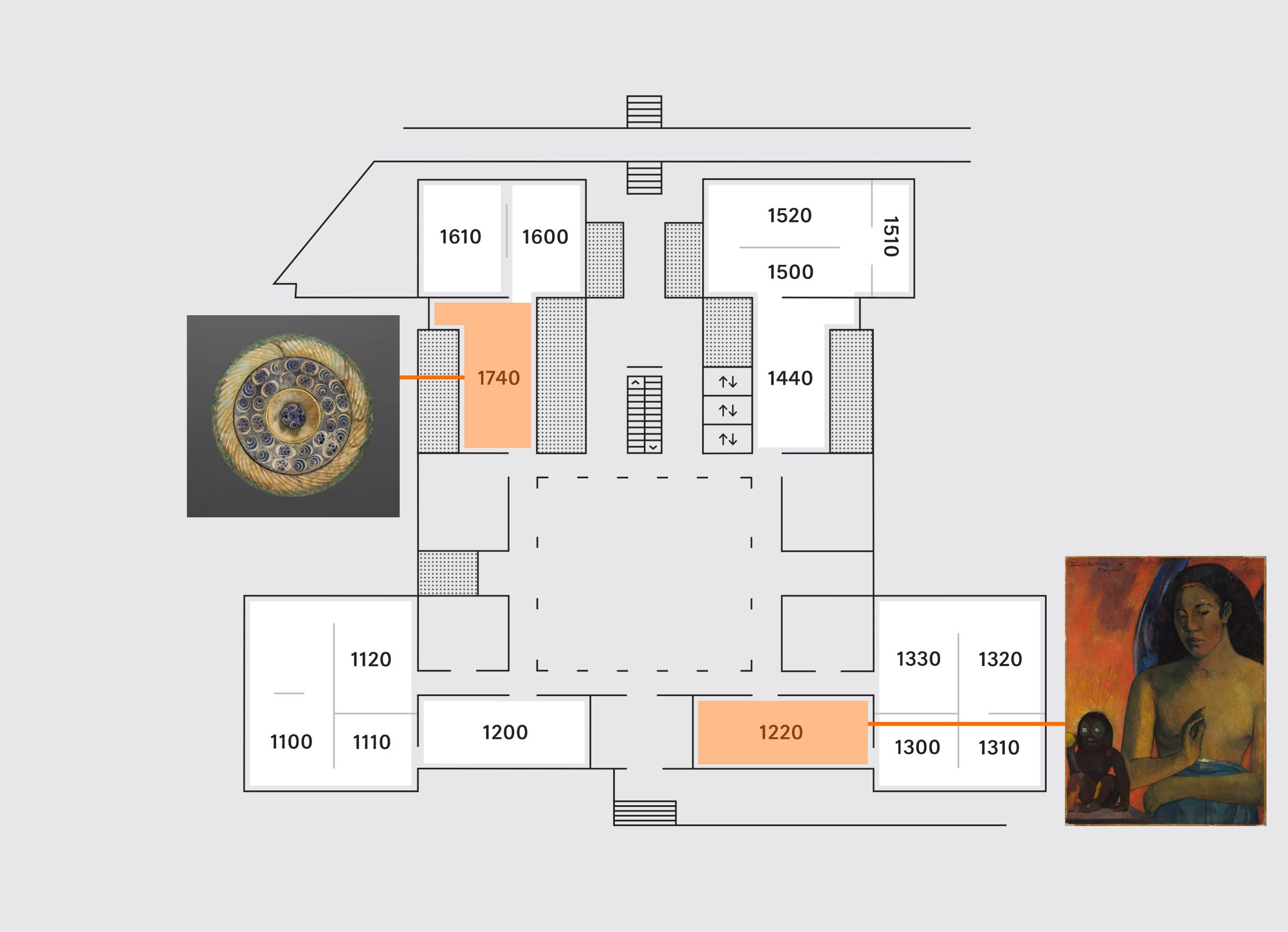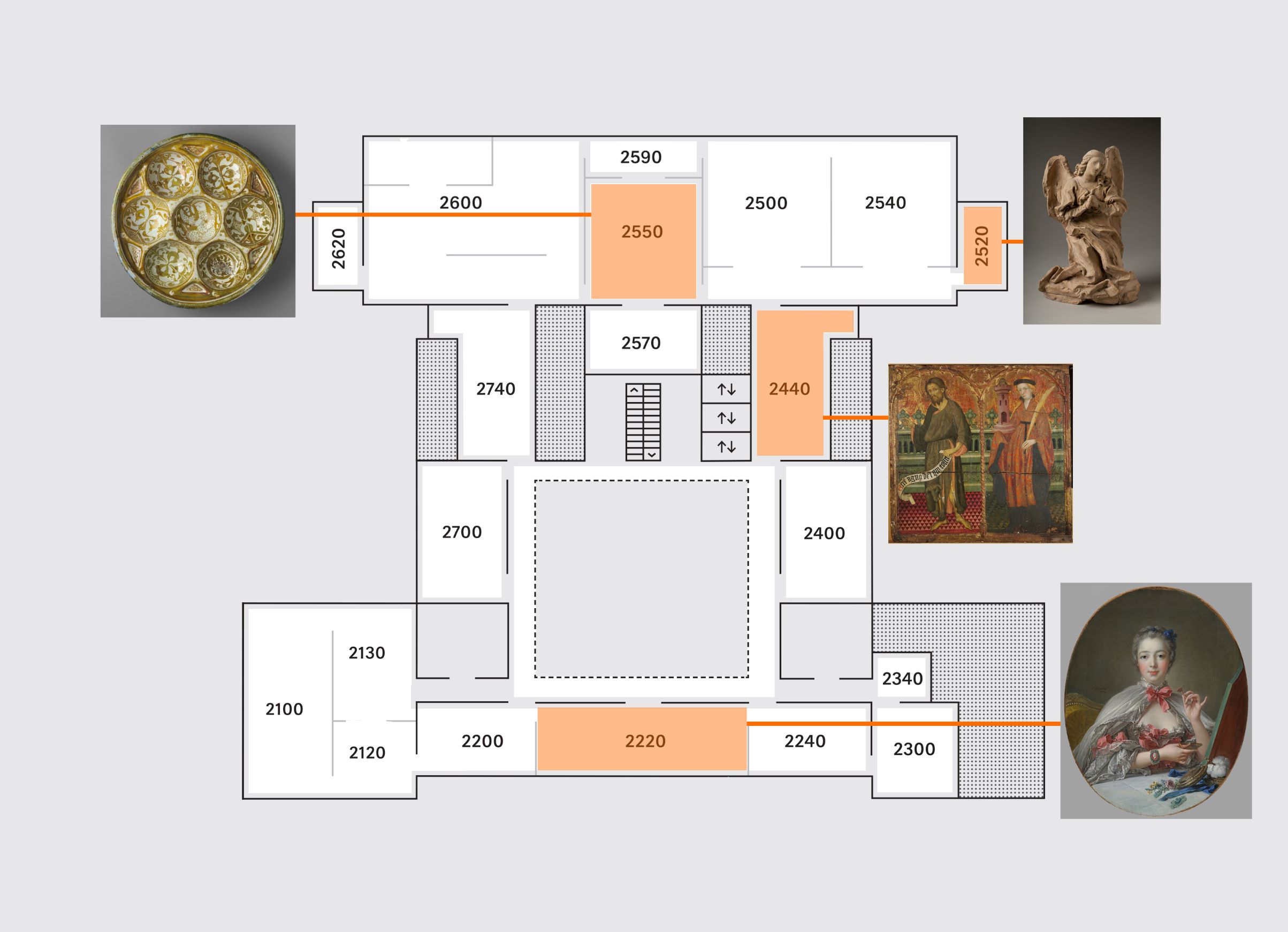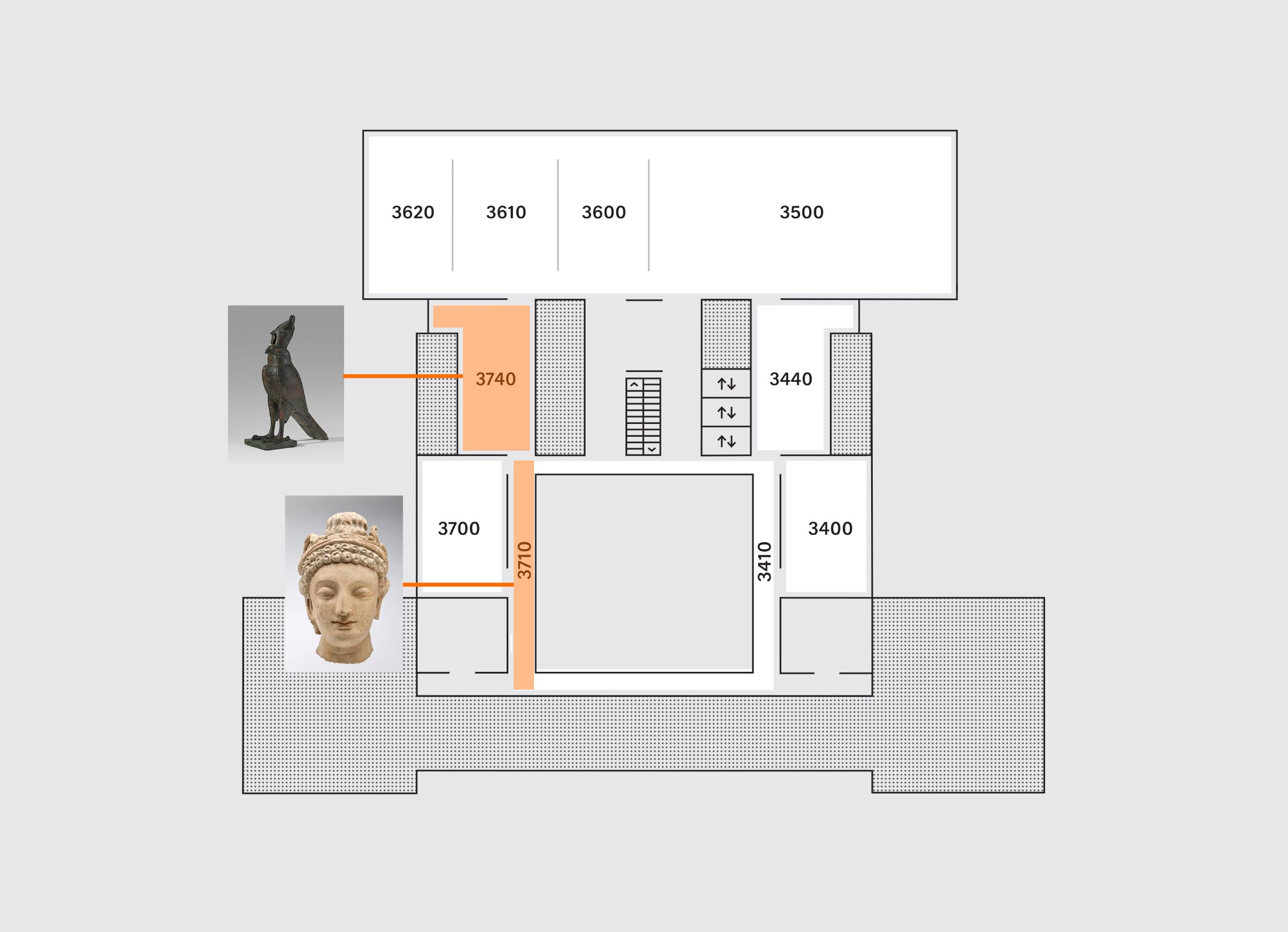On your next visit to the museums, keep an eye out for our new Art + Science Pathway in the permanent collections galleries. The pathway highlights objects that have been treated and studied by conservators and conservation scientists at the Harvard Art Museums.
Artistic and scientific inquiry have always been deeply intertwined at the museums. Each year, more than 8,000 objects are conserved and analyzed in the Straus Center for Conservation and Technical Studies. The first facility of its kind in the United States, the Straus Center houses labs that specialize in the conservation of works on paper, paintings, sculpture, decorative objects, and historical and archaeological artifacts.
Technical imaging and scientific analysis help resolve long unanswered questions, yield insights, and uncover hidden stories about artworks. We invite you into the galleries to explore the pathway—highlighted in the maps below and called out in the galleries with orange brackets around the wall labels—to learn how objects were made, how they have changed over time, and what has been discovered beneath the surface.
The first group of objects on the Art + Science Pathway was examined through radiography, or X-rays. This imaging technique tells us about inner structures of objects, just as it does with the human body. The X-rays penetrate light materials and are absorbed by dense materials, producing maps of relative density. A radiograph can make visible parts of an object that an artist painted over, because both the underpainting and the surface layer block radiation. It can also provide details about the surface on which an artist painted, such as the weave of a canvas or the grain of a wood panel. X-radiographs of three-dimensional objects will show old breaks that have been covered up by restoration, or the way a sculptor used clay or stone to build around a metal support structure. Across our galleries, eight objects are accompanied by reproductions of radiographs as well as explanations of what the X-rays revealed about the works.
Pathway objects can be found in the following galleries:






